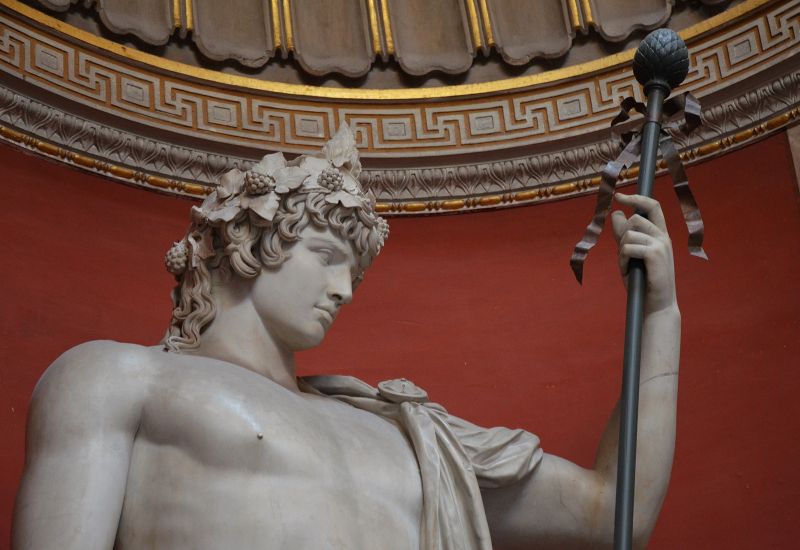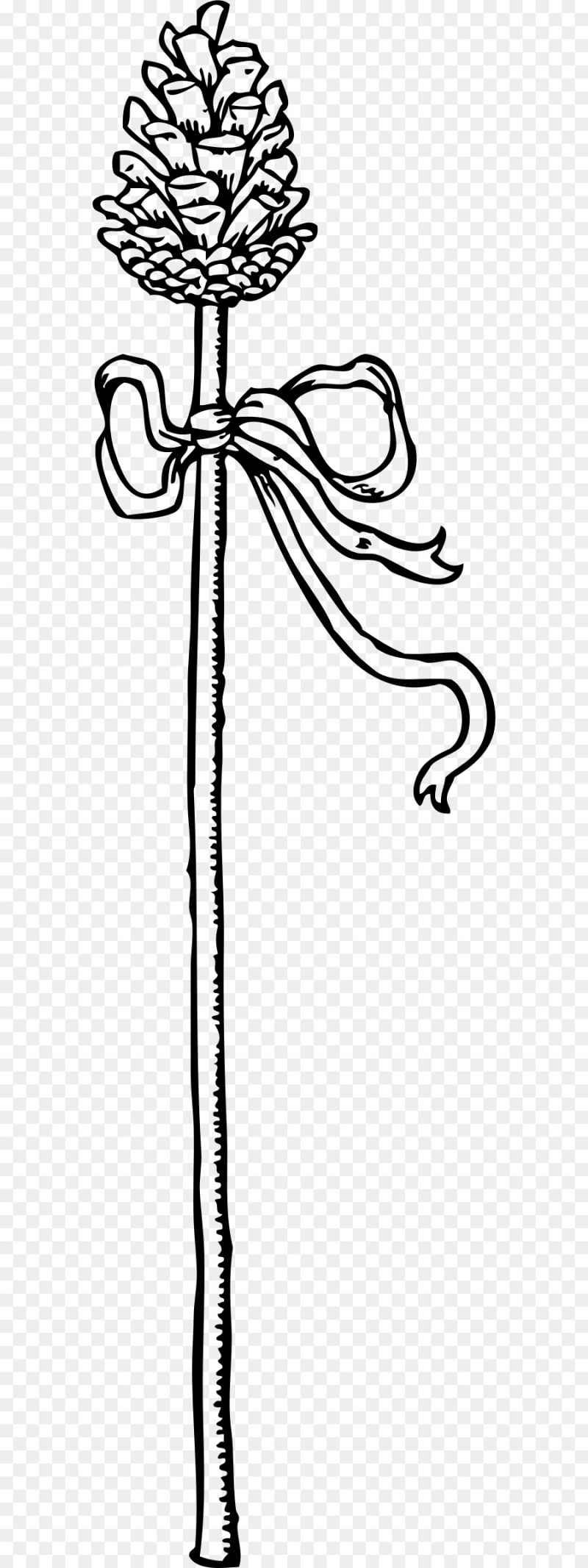Dionysus is often depicted as carrying a thyrsus
Dionysus and his followers are frequently depicted carrying a thyrsus, a popular emblem associated with God, in art, iconography, and literature. The thyrsus is a huge fennel wand or staff wrapped in ivy vines or leaves. A pinecone, a cluster of vine leaves and grapes, or ivy leaves and berries were commonly used to top it. Just below the pine cone or the group of leaves, a riband or fillet can be found linked to it. The thyrsus was a sacred instrument in Greek rituals and ceremonies and was seen as a symbol of prosperity, fertility, and an overall delight.
This is thought to be Dionysus' mystical stuff. Dionysus can use this magical tool to change the rock into the water. The thyrsus was also employed by Dionysus to turn water into wine, and the tip of the thyrsus was thought to cause insanity. The thyrsi can also be used as a weapon ("a spear wrapped in vines"). For example, in Euripides' play "The Bacchae," the main heroine Agave kills her son by impaling his skull on Dionysus' thyrsus by accident. Baccus (Dionysus) and his disciples are also shown giving the thyrsus in Ovid's Metamorphoses Book III.












